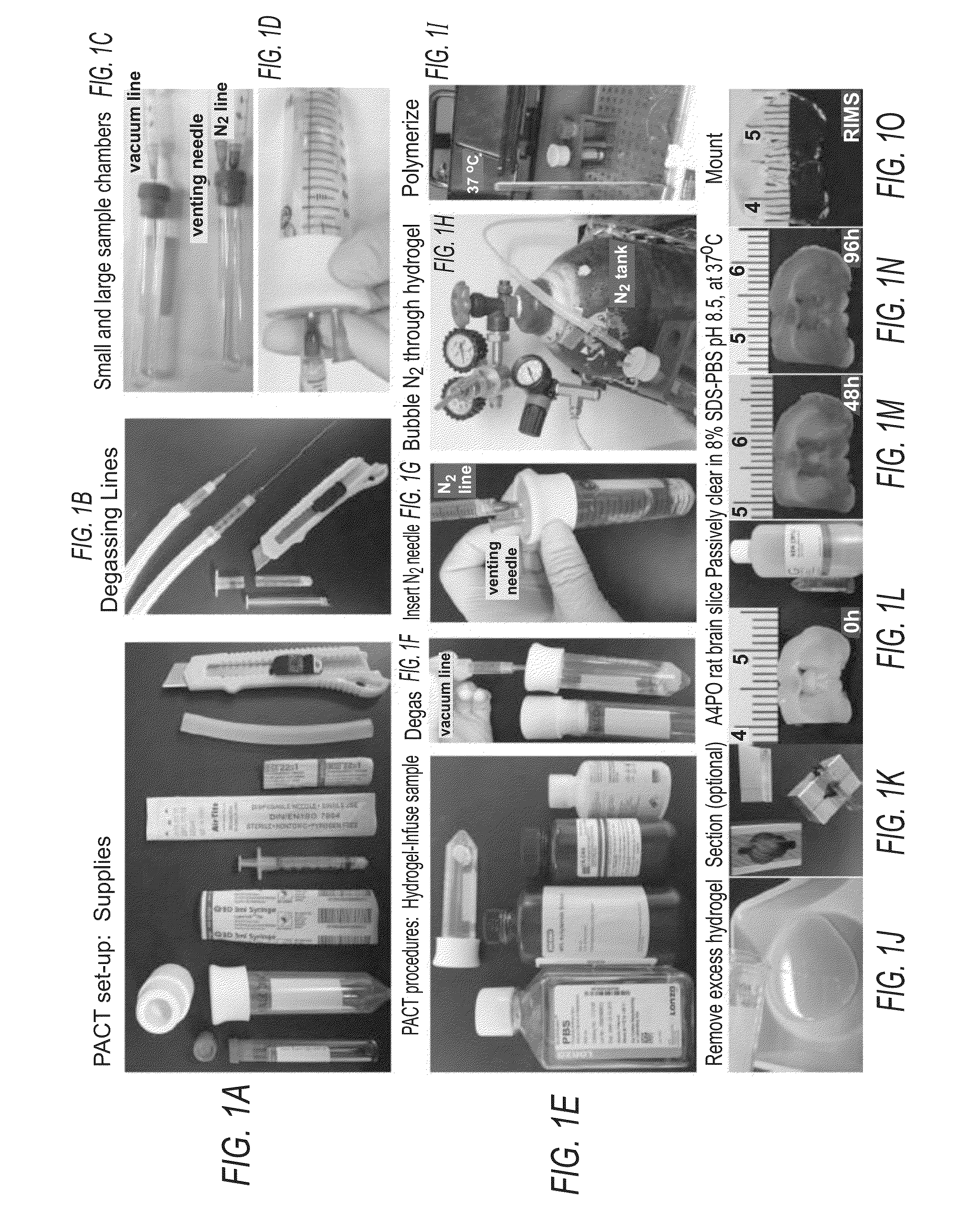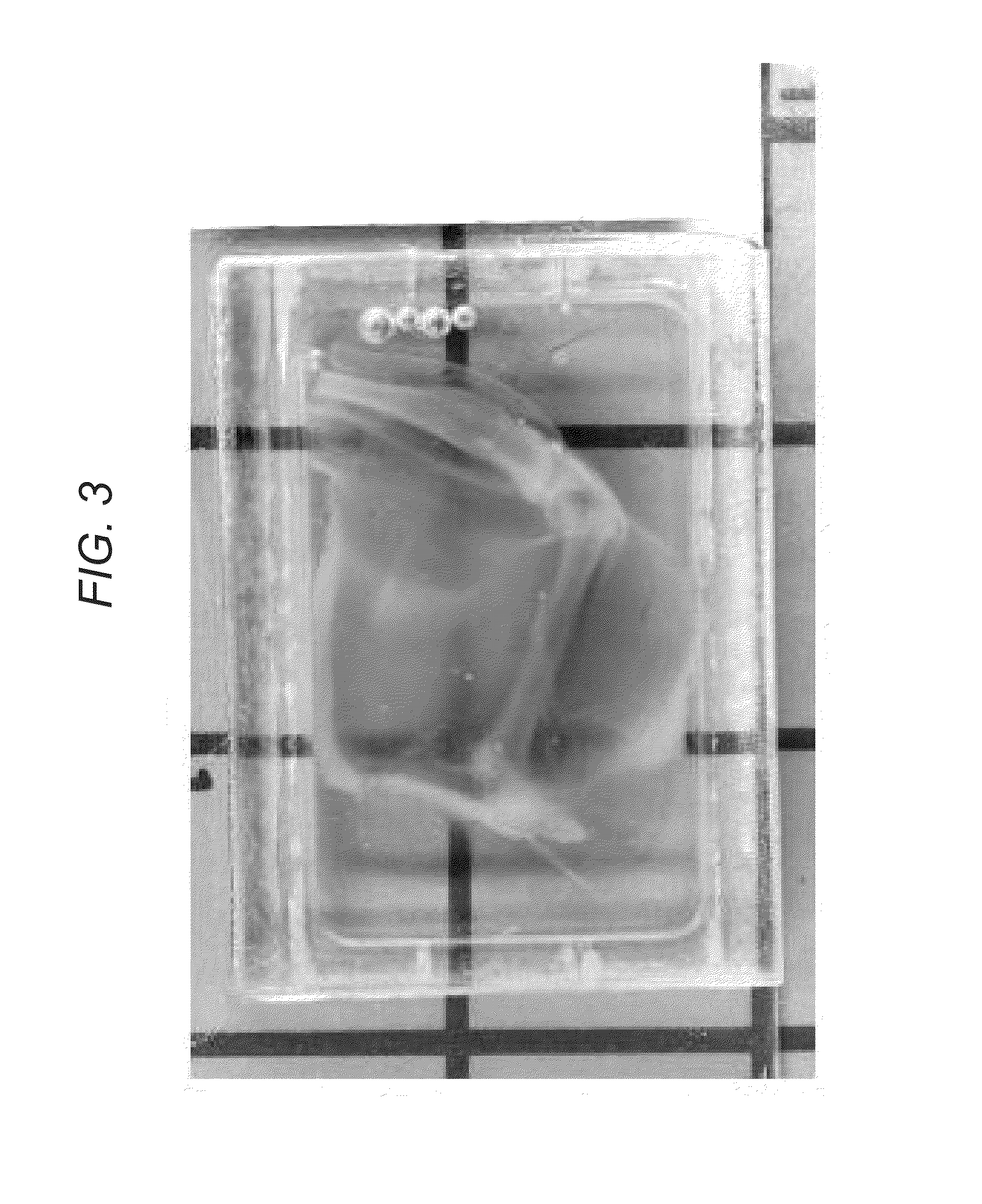Methods for phenotyping of intact bones by tissue clearing and staining
a technology of intact bones and tissue, applied in the field of tissue preparation and characterization, can solve the problems of large damage to tissue samples, physical challenges, and inability to easily access three-dimensional information in most mammalian osseous tissue,
- Summary
- Abstract
- Description
- Claims
- Application Information
AI Technical Summary
Benefits of technology
Problems solved by technology
Method used
Image
Examples
example 1
Tissue Preparation for PACT
[0057]A bone containing sample (“bone sample”) to be PACT processed is excised. The bone sample is post-fixed in 4% PFA for 1-2 hours at RT with gentle agitation on a rocking platform shaker. If desired, the sample can be post-fixed overnight at 4° C. Fixing samples for extended periods of time may result in over-fixation and antigen masking.
Formation of a Tissue-Hydrogel Matrix
[0058]The polymerization of tissue components with hydrogel monomers is important as it ensures that SDS micelles preferentially solubilize and remove tissue lipids during clearing. It was previously determined that a minimal acrylamide-based network, which supports more rapid clearing, was nevertheless sufficient for stabilizing proteins and nucleic acids. To increase the level of crosslinking without the addition of bis-acrylamide or PFA to the hydrogel monomer solution, the hydrogel-infused tissue can be carried through rigorous degassing steps.
Hydrogel-Embedding of PACT Samples
[...
example 2
Reagents and Setup
Refractive Index Matching Solution (RIMS)
[0071]Histodenz™ (Sigma-Aldrich, cat. no. D2158)[0072]0.02 M Phosphate buffer[0073]Sodium azide (Fisher Scientific, cat. no. 71448-16)
[0074]To prevent microbial growth, sodium azide may be added to all mounting medias (RIMS and sRIMS), as well as to all immunostaining dilutions and wash buffers that are used in extended incubations.
Sorbitol-Based Refractive Index Matching Solution (sRIMS)[0075]70% Sorbitol (Sigma-Aldrich, cat. no. 309532)[0076]0.02 M Phosphate buffer[0077]Sodium azide (Fisher Scientific, cat. no. 71448-16)
Refractive Index Matching Solution for Cold Storage (cRIMS)[0078]Histodenz™ (Sigma-Aldrich, cat. no. D2158)[0079]0.005 M Phosphate buffer[0080]Sodium azide (Fisher Scientific, cat. no. 71448-16)
Immersion Media and Alternative Mounting Media
[0081]There are numerous commercial and home-made RIMS alternatives, including FocusClear, Cargille Labs optical liquids, 2,2′-thiodiethanol, and diluted glycerol.
Glycero...
PUM
 Login to View More
Login to View More Abstract
Description
Claims
Application Information
 Login to View More
Login to View More - R&D
- Intellectual Property
- Life Sciences
- Materials
- Tech Scout
- Unparalleled Data Quality
- Higher Quality Content
- 60% Fewer Hallucinations
Browse by: Latest US Patents, China's latest patents, Technical Efficacy Thesaurus, Application Domain, Technology Topic, Popular Technical Reports.
© 2025 PatSnap. All rights reserved.Legal|Privacy policy|Modern Slavery Act Transparency Statement|Sitemap|About US| Contact US: help@patsnap.com



